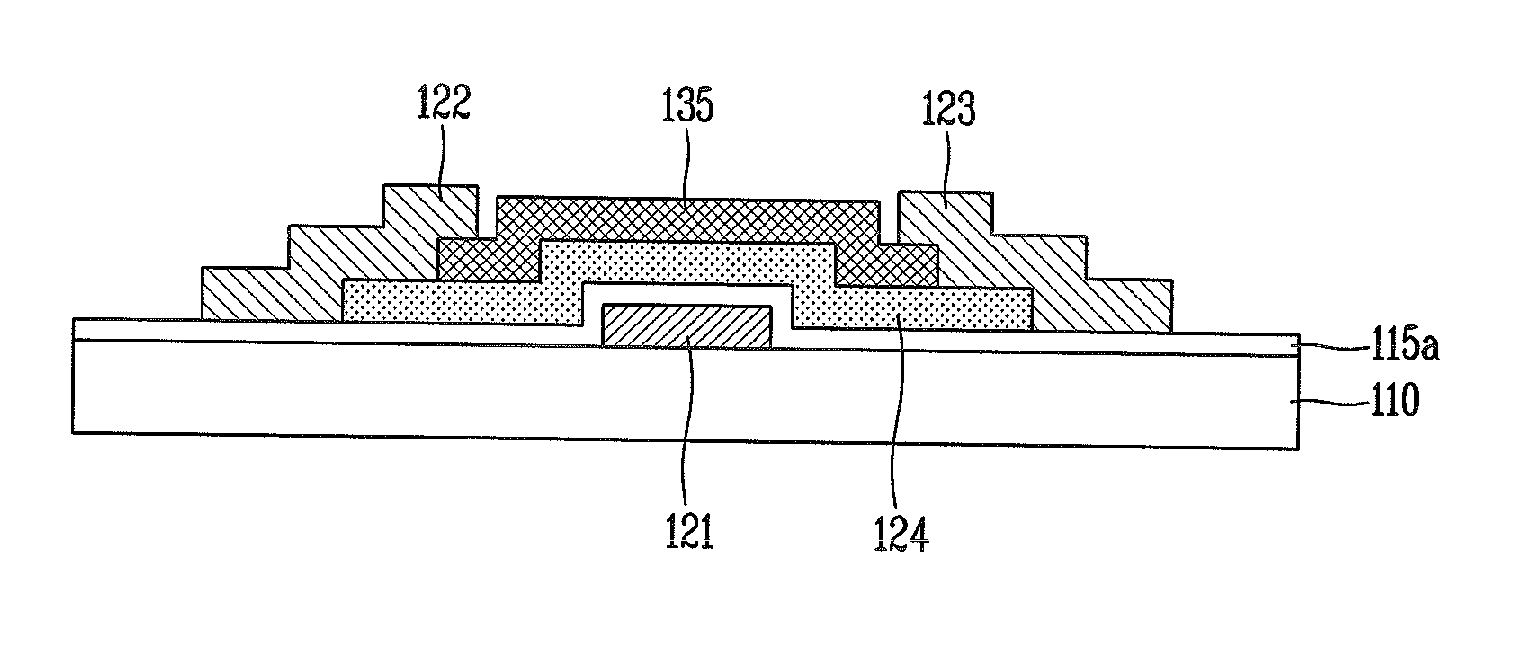Method of fabricating oxide thin film transistor
- Summary
- Abstract
- Description
- Claims
- Application Information
AI Technical Summary
Benefits of technology
Problems solved by technology
Method used
Image
Examples
first embodiment
[0061]FIGS. 5A through 5E are cross-sectional views specifically illustrating a second mask process according to the present invention.
[0062]As illustrated in FIG. 5A, a insulation layer 115a, which is made of an inorganic insulation film such as a silicon nitride (SiNx) film, a silicon oxide (SiO2) film and the like, or an high-dielectric oxide film such as a hafnium (Hf) oxide, aluminum oxide and the like, is formed on an entire surface of the substrate 110 formed with the gate electrode 121.
[0063]At this time, the insulation layer 115a may be formed by a CVD method using a plasma enhanced chemical vapour deposition (PECVD) system or formed by a physical vapour deposition (PVD) method using a sputtering system.
[0064]Subsequently, a predetermined amorphous zinc oxide-based semiconductor layer 120 is formed by depositing an amorphous zinc oxide-based semiconductor on an entire surface of the substrate 110 formed with the insulation layer 115a using a sputtering system. Then, a prede...
second embodiment
[0079]On the other hand, the active layer and channel protection layer may be formed by using a diffraction mask, and it will be described in detail through the present invention as described below.
[0080]FIGS. 6A through 6F are cross-sectional views specifically illustrating a second mask process according to a second embodiment of the present invention.
[0081]As illustrated in FIG. 6A, a insulation layer 215a, which is made of an inorganic insulation film such as a silicon nitride film, a silicon oxide film and the like, or an high-dielectric oxide film such as a hafnium oxide, aluminum oxide and the like, is formed on an entire surface of the substrate 210 formed with the gate electrode 221.
[0082]Subsequently, a predetermined amorphous zinc oxide-based semiconductor layer 220 is formed by depositing an amorphous zinc oxide-based semiconductor on an entire surface of the substrate 210 formed with the insulation layer 215a using a sputtering system. Then, a predetermined amorphous zi...
PUM
 Login to View More
Login to View More Abstract
Description
Claims
Application Information
 Login to View More
Login to View More - R&D Engineer
- R&D Manager
- IP Professional
- Industry Leading Data Capabilities
- Powerful AI technology
- Patent DNA Extraction
Browse by: Latest US Patents, China's latest patents, Technical Efficacy Thesaurus, Application Domain, Technology Topic, Popular Technical Reports.
© 2024 PatSnap. All rights reserved.Legal|Privacy policy|Modern Slavery Act Transparency Statement|Sitemap|About US| Contact US: help@patsnap.com










